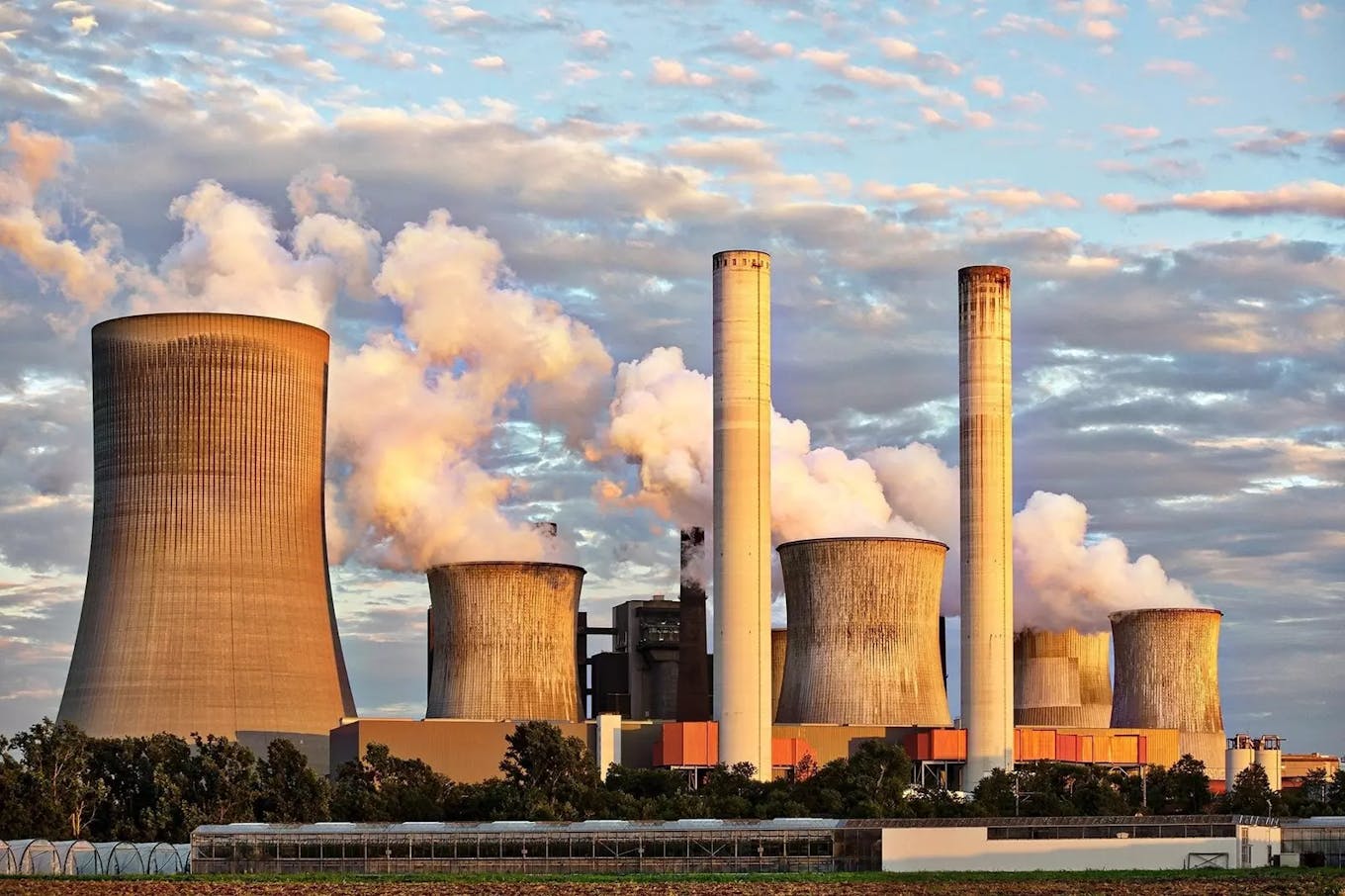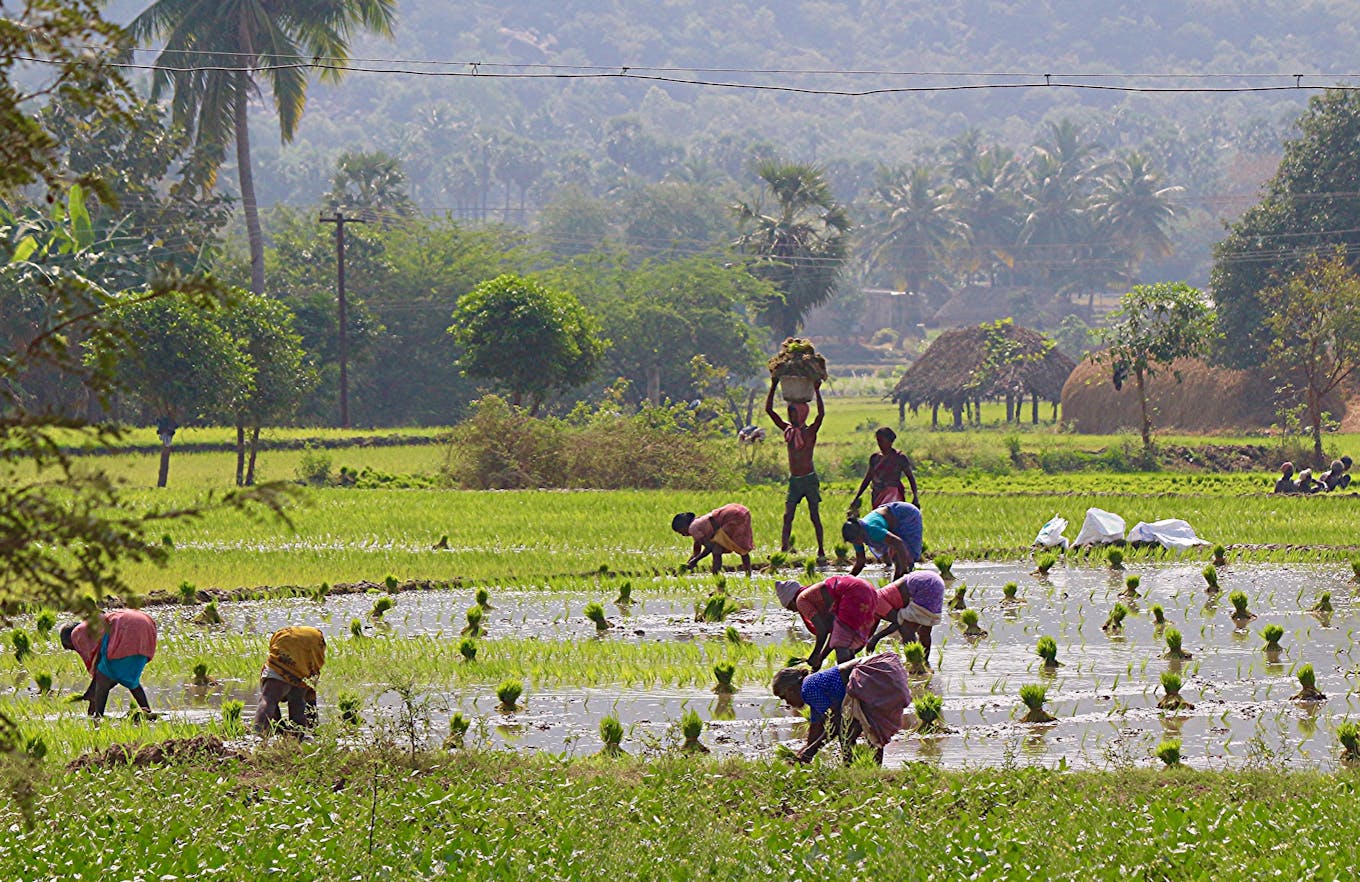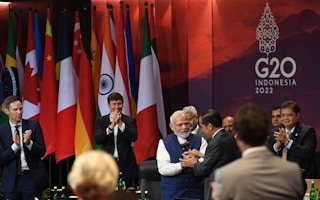The Group of 20 (G20) Summit is convening in the Indian capital, New Delhi this weekend. All eyes are on India as it has set its sights on using the presidency to have the needs of the Global South countries heard and assert its position as a powerful nation.
To continue reading, subscribe to Eco‑Business.
There's something for everyone. We offer a range of subscription plans.
- Access our stories and receive our Insights Weekly newsletter with the free EB Member plan.
- Unlock unlimited access to our content and archive with EB Circle.
- Publish your content with EB Premium.
Convening on the back of the BRICS summit – an economic bloc that India is also part of – which has been dominated by geopolitics, the G20 meeting, primarily a forum for multilateral economic cooperation, might not be able to escape discussing issues of the day such as the war in Ukraine. The Indian presidency, however, is signalling that it is determined to sharpen its focus for the upcoming discussions, including on topics like climate.
Days before leaders from around the world gather in New Delhi, Indian Prime Minister Narendra Modi, in media interviews and statements, repeatedly emphasised that, as host, it has a clear roadmap that it will implement and that the climate crisis is still very much on his mind.
“We have moved from being just a member of global efforts to playing a leading role in many initiatives,” he said, adding that India has been making great progress in climate-centric initiatives domestically. “We are working with other nations to alter the approach [to the fight against climate change], from a restrictive one to a constructive one.”
Observers and direct participants of the G20 tell Eco-Business that India’s climate agenda is an expansive and ambitious one, but it could still fall short of delivering what it has pledged.
G20 Sherpa Amitabh Kant urged for G20 member countries to take a broader view, and “not get obsessed by just one issue”, referring to Russia’s war on Ukraine. “There are many more important issues…We need to discuss the progress on sustainable development goals (SDGs), climate action, technological transformation, etc. so that we can create impact that will benefit a wider segment of the public.”
Mandy Rambharos, vice president at United States-based non-profit Environmental Defense Fund (EDF) agrees that the G20 meeting needs to focus on issues that affect everyone. “I’m not being glib about it, but if you look around the world, there have been (geopolitical) conflicts happening for years, but they do not need to become the centre of focus.”
Cutting ‘unabated’ fossil fuels
Fossil fuel use will likely still be a lightning rod in the discussions. There is widespread scepticism if India, which has been insistent on pursuing only a coal “phase-down” at the COP26 meeting last year, can properly lead on climate, if it cannot make a staunch promise to completely phase out the dirty fuel.
A meeting in June this year when G20 energy ministers failed to reach a consensus over curbing the “unabated” use of fossil fuels is indicative of how pressures have built up.
The term ‘phase out’ implies a systematic and gradual reduction in the use of coal over a period of time until it is discontinued. ‘Phase-down’ also means a systematic reduction, but only to a point where it is acceptable to continue using coal indefinitely, explained experts familiar with India’s reluctance to fully commit to a full phase-out.
“You cannot directly jump to a phase-out when you are dealing with a large system (like India’s),” said Vibhuti Garg, director of Southeast Asia at global think tank Institute for Energy Economics and Financial Analysis(IEEFA). Unlike countries such as Japan and Germany, where coal production is typically between 30 to 50 gigawatts (GW), India’s capacity stands at a staggering 210 GW. China faces the same problem, with its coal production at a level that exceeds 1000 GW, said Garg.

India is still very much reliant on coal, with a coal production capacity of about 210 gigawatts. Image: World Economic Forum.
“India and China are doing a lot, for example, on renewables. But people don’t see that side, they always see the fossil side of things,” said Mandy Rambharos.
Coal accounts for about 44 per cent of global carbon dioxide (CO2) emissions, which is responsible for warming up the earth. Reining in coal at the upcoming G20 summit is an increasingly urgent task, as global temperatures soar, bringing about more frequent and intense extreme weather events.
Conversations about oil and gas are expected too, in light of the upcoming COP28 summit in the United Arab Emirates, which has a monopoly over these two resources. Africa, the Middle East and Russia are under increasing pressure to reduce their oil and gas production.
Green funds for emerging markets
Green financing is needed to sustain environmentally and socially conscious operations. A Sustainable Finance Working Group (SFWG) was endorsed by central bank governors and finance ministers worldwide in 2021 who produced a roadmap to green finance for the current G20 summit.
The G20 meetings in India have so far had three exchanges about using resources fairly for climate finance, helping with SDGs, and paying for a system that supports sustainable development. Officials at the talks were quoted as saying that green bonds and sustainability-linked bonds (SLBs) were discussed by private players looking to raise funds for the implementation of key climate projects.
In January this year, India’s sovereign green bond also made its debut. It joins 43 other governments around the world in raising green, social, sustainable, sustainability-linked (GSS+) debt.
“The 2015 Paris Agreement set a target for an inflow of US$100 billion by larger countries to the developing nations, a target we are not even close to achieving in these seven years,” said EDF’s Rambharos. “We need to see real financing on the table for transition. There needs to be some sort of agreement on (how to finance) renewables, and green industry.”
The September G20 meeting will likely address a set of SFWG deliverables that have already been outlined by the group. Key challenges highlighted include the lack of a “set climate policy”, the flow of public and private capital towards developed countries instead of developing ones, as well as the limited mobilisation of finance by small and medium-sized enterprises. At present, climate bonds account for a meagre 5 per cent of the world’s financial assets.

At the third meeting of the Sustainable Finance Working Group in Mahabalipuram, Tamil Nadu, 2023. Image: G20 India / X
Strengthening multilateral development banks
An independent expert group has been set up by the Indian presidency to assist in the work of multilateral development banks (MDBs), including the World Bank, Asian Development Bank (ADB) and the African Development Bank. These MDBs provide financial support to developing countries for their social and economic development.
Green funding is a part of their operations. The expert group on MDBs has revealed a need for US$3 trillion per year by 2030 to be spent on sustainable operations. An additional US$260 billion will be offered by MDBs to boost private finance sectors.
A triple mandate to highlight their agenda has been issued by the expert group. This includes a) the elimination of poverty, with over 600 million people still suffering from it; b) tripling sustainability lending by 2023; and c) creating a third funding mechanism for innovative and flexible engagement with investors.
G20 members will have a chance to revisit this agenda and it is expected that their focus will be on poverty, according to reports by US-based think tank Center for Global Development.
Food grain sufficiency
Russia has terminated Ukraine’s export of food grains, breaking the grain deal that allowed about 33 million tonnes of Ukrainian food grains to be exported since the war began. After the deal fell apart, wheat and corn prices have seen a sharp rise in both Europe and the United States. According to data from Ag Market Insights, Ukraine contributes 15 per cent of corn exports and 10 per cent of wheat exports worldwide.
More recently, India banned the export of basmati rice to control inflation which rose by 11.5 per cent. Being the largest exporter of rice, this decision has affected several Asian countries like Singapore, Vietnam and Thailand due to a hike in prices. The Middle East and Africa are also vulnerable to the issue.
Saksham Nijhawan, principal strategist at Forum for the Future, said: “If adaptation practices are not built, then we are going to see nations putting their domestic interests in front of international interests and policies. We have already seen that in China, where the supply of microchips and semiconductors has been slow, impacting electronics, cars, laptops, and mobile phones. ”
With the current uncertain situation regarding the export of food grains, increasing prices, and diminishing grain reserves, affected nations may raise the issue at the upcoming G20 meeting and demand resolutions.

India is the world’s largest exporter of rice, selling over 22 million tonnes of the crop last year – some 40 per cent of the global supply. Image: Byghan / Flickr
A boost for green tourism
In June 2023, the Goa Roadmap was laid down at the G2O tourism-centered meet, which promoted sustainable tourism, including green tourism. India plans to promote green tourism by opening up 50 new destinations for tourists. These locations will be undertaking green initiatives such as investing in sustainable infrastructures, mitigating waste in tourism and preserving wildlife and ecosystems by sustainable management of resources.
There have been several sustainable tourism initiatives taken by countries in the past, including South Africa’s Green Tourism Incentive Program in 2017, Costa Rica’s initiative in 2020 to identify eco-friendly travel challenges and solutions, and the ‘Green Transformation’ agenda highlighted in the G20 Summit of 2021 under the Italian presidency, where global ministers welcomed it.
With the Goa Roadmap already in place, further discussion on the topic of green tourism might be overshadowed by other persisting issues of climate financing and coal phase-out.








